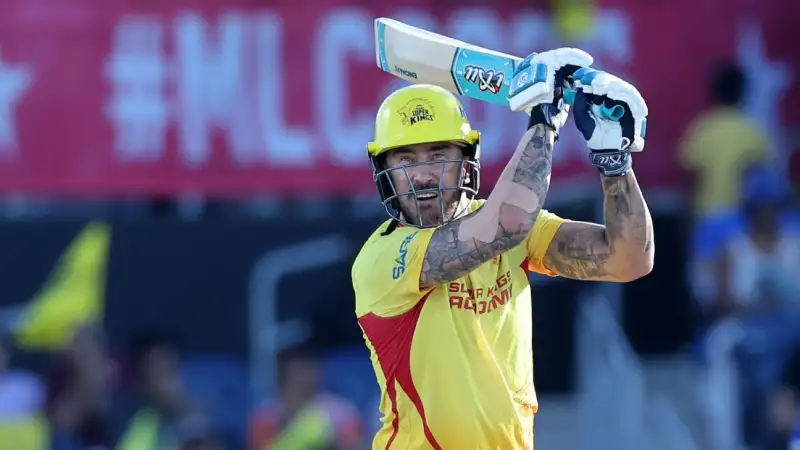Why This Matchup Grabs Attention
The Texas Super Kings (TSK) and MI New York (MINY) didn’t just bring familiar IPL colors to the United States; they imported full‑blown cricketing cultures. Texas channels the Chennai blueprint—structure, street‑smart tactics, and deep spin IQ—while MI New York maps to the Mumbai DNA—clutch hitters, fast‑bowling firepower, and big‑stage temperament. Put them together and you get a heavyweight clash that means something every time it’s on the calendar.
If you’re searching for a texas super kings vs mi new york timeline, you’re really looking for two things:
- What’s happened so far (milestones, inflection points, season‑by‑season progress), and
- How the rivalry keeps evolving (tactics, rosters, venues, and fan culture).
This guide gives you both, plus a clean structure you can use to track each subsequent season.
Quick Take: The Rivalry in One Glance
- League: Major League Cricket (MLC), USA
- Teams: Texas Super Kings (Dallas–Fort Worth home market) vs MI New York (New York franchise)
- Why it matters: Consistent title aspirations, blockbuster players, and a classic styles‑clash—controlled structure vs explosive power.
- Signature venues: Grand Prairie Stadium (Dallas area) and Church Street Park (Morrisville), both known for fast outfields and big totals.
- Narrative arc: From the inaugural season onward, MINY’s big‑match pedigree and Texas’s system‑driven cricket have set the stage for high‑leverage games and raucous crowds.
The Origin Story: Two Blueprints, One Battleground
Texas Super Kings stitched themselves directly to the Chennai Super Kings’ philosophy: calm captains, adaptable spinners, surgical middle overs, and clinical death bowling. You can feel that DNA in their on‑field choices—powerplay discipline, stacked spin options, and fielding angles that squeeze opponents into mistakes.
MI New York, by contrast, leans on the Mumbai playbook: deep hitting cores, high‑quality quicks, and players who relish knockout pressure. Their best days feel inevitable: a late‑innings launch here, a double‑strike over there, and suddenly the win probability graph collapses in their favor.
When these frameworks collide, you don’t just get runs and wickets—you get a philosophical tug‑of‑war. That’s why a texas super kings vs mi new york timeline never reads like a dry list of fixtures. Each chapter is a case study in how elite T20 teams solve each other.
The Texas Super Kings vs MI New York Timeline (Season by Season)
Note: This is a living, season‑by‑season structure to track how the rivalry has unfolded and how it continues to evolve. It focuses on the what mattered rather than just what happened. Use it as your running reference for each new MLC season.
Season 1 — Inaugural Foundations (2023)
- Setting the stage: The league’s first year brought packed houses and a “prove‑it” energy. MINY showcased immediate big‑game steel, while TSK established a loyal base and a cohesive, method‑first style.
- Rivalry tone: Every meeting felt like a barometer. Texas hunted control with disciplined new‑ball lines and mid‑overs spin; New York countered with finishing power and wicket‑taking pace.
- Key milestone: MI New York’s championship run stamped their clutch credentials. For Texas, the season validated their approach and the fan demand in the Dallas–Fort Worth market.
How to read 2023 in the timeline
- The first chapter underscored identity clarity: Texas as structure; New York as surge.
- Even without enumerating every over, you can track the momentum swings: powerplay control vs. end‑overs punch.
Season 2 — Refinement and Recalibration (2024)
- Strategic shifts: Texas doubled down on rotation bowling and fielding sharpness, choosing matchups over raw pace. MI New York fine‑tuned their death‑overs patterns and batting depth.
- Inflection points: Moments hinged on mini‑battles—Texas’s spinners vs New York’s left‑hand power, or MINY’s new‑ball quicks against TSK’s top‑order anchors.
- What changed: More data meant smarter pre‑game plans. The rivalry became a chess match—captains moved the board constantly: slip in early, deep square leg up, long‑off on a string.
How to read 2024 in the timeline
- Note where matchups repeated and whether results flipped.
- Watch for venue‑driven adjustments—Grand Prairie vs Morrisville play differently in wind, bounce, and boundary geometry.
Season 3 — The Stakes Keep Rising (2025 and beyond)
- Narrative stakes: Trophies sharpen rivalries. Every time TSK and MINY share a field, playoff seeding and psychological edges loom in the background.
- What to track:
- Which side wins the powerplay wickets battle?
- Who controls overs 7–15 (where Texas often chokes the rate)?
- Does death‑overs execution (Yorkers, wide lines, boundary protection) swing the result late?
How to read 2025+ in the timeline
- Keep a running log: opponent, venue, toss result, target/score, standout spells/knocks, turning over.
- Revisit how captains handled set batters at the death and how frequently either team burned reviews in big moments—those micro‑patterns tell the story behind the scorecards.
Head‑to‑Head Themes That Decide Games
Powerplay: First Punch Matters
- Texas Super Kings: Prefer new‑ball accuracy—top of off, hard lengths, and early protection for deep third/fine leg to throttle boundaries. If they nab a wicket in the first three overs, their spinners get to attack fields later.
- MI New York: Often test you with pace and swing upfront, plus attacking fields to rip out openers. If they win early, they tee up their finishers to chase with freedom.
Middle Overs: Spin Traps vs Rotations
- Texas uses spin as a pressure valve and a wicket‑taking lever. Expect varied trajectories, wider lines to the short boundary, and catchers where batters think singles are guaranteed.
- New York respects the slow squeeze but counters with proactive strike rotation—reverse sweeps, shuffles across off, and mid‑over tempo resets.
Death Overs: The Art of Surviving the Storm
- New York finishers (historically) relish the last four. They thrive when chasing par or defending with protection on both sides of the wicket.
- Texas specialists aim for yorkers and into‑the‑pitch changeups, plus cool heads at long‑off/long‑on. If they get their fields right—especially the square boundary—they flip tight finishes.
Venues and Conditions That Shape the Timeline
Grand Prairie Stadium (Dallas area)
- Outfield: Quick. Misfields become fours.
- Bounce: True enough for through‑the‑line hitting.
- Implication: Texas can defend if they nail fielding angles and trap batters into hitting to the long side. MINY’s pace can boss here if they win lengths.
Church Street Park (Morrisville)
- Boundaries: Punishing for errors; small pockets reward innovation.
- Implication: Whoever controls the middle‑over economy usually wins, because late‑innings fireworks are almost a given. Good death bowling is a superpower here.
Players Who Tilt the Balance
You’ll often hear the same kinds of names in this rivalry context: seasoned captains with icy decision‑making, middle‑order strikers who turn 8‑run overs into 18, fast bowlers with new‑ball shape, and spinners who bowl the “tough” overs (7–9, 13–15) for fun. Across seasons, both teams have featured international‑grade match‑winners in all roles. When you build your texas super kings vs mi new york timeline, tag standout spells and innings that meet these profiles:
- Powerplay enforcers: Seamers who take out an opener and dictate fielding powerplays.
- Middle‑over maestros: Spinners with economy <7 who force risky release shots.
- Finishers: Batters with 170+ strike rate late; bowlers who hold under 9 at the death.
The point isn’t just “who scored most”; it’s when and against whom.
Rivalry Metrics That Matter (Beyond the Scoreline)
If you’re maintaining a personal timeline or coverage log, add these columns:
- Toss & Decision: Did chasing confer a real edge?
- Phase Splits: Runs/wkts in overs 1–6, 7–15, 16–20.
- Boundary% vs Dot%: Which side won the dots battle without leaking too many fours?
- Matchups: Specific bowler‑batter duels (e.g., left‑arm pace to right‑hand finisher, leg‑spin to left‑hand anchor).
- Fielding Events: Direct‑hit run‑outs and boundary saves are often worth ~10 swing runs in tight games.
- Reviews: Unsuccessful reviews in high‑leverage overs can cost captains flexibility.
Over time, these metrics are the connective tissue of any texas super kings vs mi new york timeline. They reveal why certain venues or plans keep working.
How the Rivalry Feels From the Stands
Texas brings drums, whistles, and that CSK‑tinged sea of yellow; New York’s blue brigade answers with chants and flags that feel big‑city bold. It’s loud, friendly, and cosmopolitan—families, first‑timers, and old‑school tragics shoulder to shoulder. The deeper the season runs, the more every TSK–MINY fixture turns into a mini‑festival: food trucks, merch drops, and linger‑after sunsets. This atmosphere is part of the timeline too—it’s cultural context that numbers can’t capture.
Tactical Playbook: How Each Side Tries to Win
If Texas Bats First
- Goal: Par‑plus with minimal wickets lost in the first 10.
- Plan: Launch targeted overs at the end of the powerplay and the 15th/16th, which sets the board for a 10–14 ball finishing cameo.
- Watch: Their right‑left combos to disrupt lines; late‑innings lap/scoop options if third man/fine leg are up.
If New York Bats First
- Goal: Force Texas into risk by setting an above‑par chase.
- Plan: Use pace‑on early, then unleash heavy hitters against the long side only when the matchup suits.
- Watch: How they handle Texas’s middle‑over spin—do they sweep to length or skip down to change the ball’s angle?
If It’s a Chase on Dew
- Bowling: Yorkers > slower‑balls if the seam won’t grip.
- Fielding: Protect square; accept the single straight.
- Captaincy: Save a matchup over for the set batter, not just the over number.
Building (and Updating) Your Own Timeline
Since a rivalry is a living thing, here’s a simple template to keep your texas super kings vs mi new york timeline fresh and useful:
- Fixture Card: Date, venue, toss, bat/bowl order.
- Phase Summary: PP (1–6), MO (7–15), DO (16–20) with runs/wickets.
- Three Moments That Mattered: A powerplay wicket, a boundary‑saving stop, a 12‑run over vs a match‑up bowler.
- Player of the Swing: Not always Player of the Match—choose the individual who created the pivotal shift.
- Learning for Next Time: One tactical note per side.
Do that for each meeting and you’ll have a rivalry archive that reads like a story, not a spreadsheet.
Frequently Asked (Real) Questions
Why do these games feel closer than most?
Because both teams are built for playoff‑grade pressure. Even when one side dominates the first 10, the other usually carries enough batting or bowling depth to drag it back in the last 30 balls.
Is venue really that important here?
Yes. Grand Prairie rewards discipline and fast outfields; Morrisville can turn into a rocket track. The same plans won’t always work in both places.
What decides a typical TSK–MINY finish?
Two things: death‑overs execution and fielding quality. Miss either by 5%, and you can surrender 10–15 swing runs.m
Where to Follow Schedules and Official Updates
For official fixtures, news, standings, and ticketing, check the league website:
- Major League Cricket — Official Site
That’s the most reliable hub for fresh match info, announcements, and series‑level context.
Final Word
A great rivalry is part memory, part anticipation. The texas super kings vs mi new york timeline is already rich with contrasts—structure vs swagger, squeeze vs surge, and two faithful fanbases that turn every match into an event. Track the phases, the matchups, and the micro‑moments, and you’ll see why this fixture sits near the top of the MLC calendar. As new seasons roll through, the details will change—but the heartbeat will stay the same: big names, big moments, and a scoreboard that rarely flatlines.







